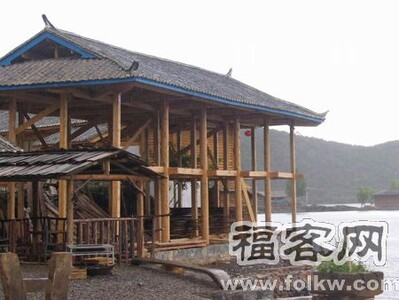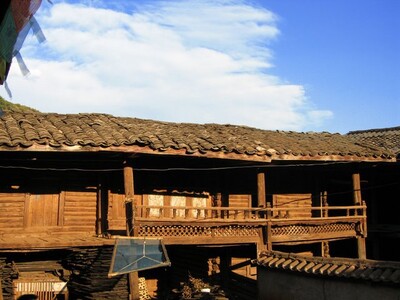Project Copenhagen, Denmark
Project about the exchange with The Little Mermaid in Langelinie Copenhagen
Work Description:
This is an undergoing project, combining events, people, nations and people's perception.
1 Build a Mosuo ethnical minority's folk house on the site of The Little Mermaid statue.
2 Invite several Mosuo girls from the Lugu Lake to live in the house, arranging a fire party by the sea according to a schedule.
Dancing, singing, toasting and playing with local people.
Introducing the Walking Marriages to Copenhagen.
Background Introduction:
Mosuo ethnical minority
Mosuo People mainly live by the side of the Lugu lake, between Yanyuan town in Liangshan, Yi Autonomous Prefecture in Sichuan province and Ninglang Yi Autonomous Prefecture in Lijiang, Yunnan Province. Mosuo people in Sichuan are considered as a branch of the Mongolian ethny while in Yunnan they are considered as a branch of the Naxi ethny.
Till 2007, the population of Mosuo people counted 40,000 people.
They have their own Mosuo language, close to the Naxi language, but don't have any Mosuo writing system. Their culture is the Daba culture, and their religion is the Tibetan Buddhism.
Mosuo people is the only existing matriarchal society, carrying on the system of walking marriage, for both male and female.
The walking marriage custom
Walking marriage is Mosuo people's most representative custom, popular in Yongning Mosuo. Men and women don't get married, except if the family need a daughter to continue the family line or a son for extra labor force.
Young people have many collective activities, expressing love through singing and dancing. As two people love each other, they proceed to the walking marriage under the bilateral aggreement. The young guy can then sneak in (what they call "Mo ru" ) the "flower house" of the girl (their room) and leave before dawn after sleeping together. Walking marriage are based on love, and have nothing to do with other matters, such as money. Guys call the girls " A Xia", while they are called "A Zhu". The child is then raised in the girl's family. Man has no responsiblities. The family and the child know their relationship. Afer the "couple" break up, they can enjoy another walking marriage continuously.
The Mosuo folk house
The house is called " Grandma house". (In Mosuo language, Grandma means "great". It could be translated as "Family House" ).
The grandma house is supported by two pillars. One represents the man, and the other the woman, which symbolize equality between men and women. Both pillars must be produced out of one same single tree. The Woman-pillar is made out of the root, while the man-pillar is the trunk, which means the foundamental and the incidental.
There is a fire pond in grandma house. The fire represents the lifeline of the family and cannot be extinguished. All major ceremonies and meeting are held in front of this fire pond.
The oldest grandma holds the sovereign power, living in an independent room. If there are several old women in one family, the most competent one grasps the power. They also follow a system where women manage money while the brother supervises the ceremonies.
Adult women lives on the second floor, called flower building. Brothers and uncles live on the first floor.
Only the flower building has windows to proceed to the "walking marriage".
More Pictures:










